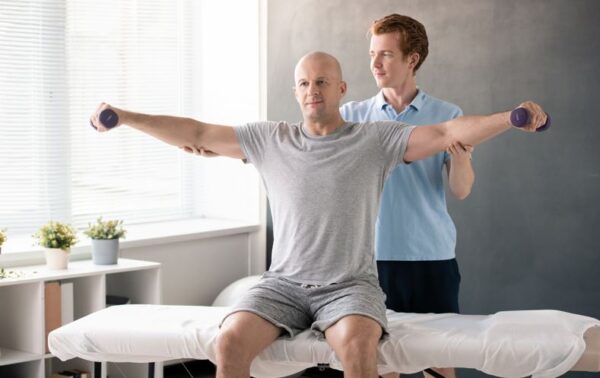When seeking treatment for pain relief, improved mobility, or overall wellness, two common options that often come up are physiotherapy and manual osteopathic therapy. While both professions aim to enhance physical health, they approach diagnosis and treatment differently. Understanding these distinctions can help you make an informed decision about which therapy might be best for your specific needs.

At Breathe Wellness in Smithville, Ontario we have both physiotherapists and manual osteopathic practitioners on hand to get you back on your path to wellness.
Understanding Physiotherapy
Physiotherapy, also known as physical therapy, focuses on diagnosing and treating physical impairments, disabilities, and promoting mobility, functional ability, and quality of life through physical interventions. Here’s what you need to know:
- Scope of Practice:
- Physiotherapists are trained to treat a wide range of conditions related to muscles, bones, joints, and nerves. This includes sports injuries, post-surgical rehabilitation, arthritis, and chronic pain conditions.
- Treatment Techniques:
- Physiotherapists use a variety of techniques including exercises, manual therapy, electrotherapy (like ultrasound and TENS), and education on posture and movement. They often design individualized exercise programs to restore strength, flexibility, and function.
- Approach:
- The approach in physiotherapy is often problem-focused, meaning treatments are based on the specific injury or condition. Physiotherapists use evidence-based practices to create structured treatment plans aimed at specific outcomes.
Understanding Manual Osteopathy
Manual Osteopathy is a holistic practice that emphasizes the interrelationship between the structure and function of the body. Osteopathic manual practitioners (OMPs) use hands-on techniques to diagnose, treat, and prevent conditions.
- Scope of Practice:
- Manual osteopaths treat a wide variety of conditions including back pain, headaches, digestive issues, and more. They focus on the body’s musculoskeletal system but also consider the body’s overall health and wellness.
- Treatment Techniques:
- Techniques include osteopathic manipulative treatment (OMT), which involves stretching, gentle pressure, and resistance techniques. Osteopaths may also use cranial osteopathy, which involves gentle manipulation of the skull, and visceral manipulation, which targets the internal organs.
- Approach:
- The approach in manual osteopathy is holistic. Osteopaths believe that all systems of the body are interconnected and that disturbances in one area can affect the whole body. Therefore, their treatments aim to enhance the body’s natural ability to heal itself by improving structural alignment and balance.
Key Differences
- Philosophy and Approach:
- Physiotherapy is more focused on specific injuries or conditions and uses a range of techniques to restore function and reduce pain. It is often guided by a problem-solving approach based on clinical evidence.
- Manual Osteopathy adopts a holistic view, treating the body as an integrated whole. It aims to restore balance and promote self-healing by focusing on the interrelationship between different body systems.
- Techniques and Treatments:
- Physiotherapists may use a combination of manual therapy, exercise, and modalities like ultrasound or electrotherapy.
- Manual osteopaths primarily use hands-on techniques like manipulation, stretching, and massage, focusing on the body’s structural integrity.
- Conditions Treated:
- Both professions treat a wide range of conditions but may have different strengths. Physiotherapy is particularly effective for rehabilitation after injury or surgery and managing chronic conditions like arthritis. Manual osteopathy may be particularly beneficial for holistic wellness and conditions that involve multiple body systems.
Which One is Right for You?
Choosing between physiotherapy and manual osteopathy depends on your specific health needs and personal preferences:
- Choose Physiotherapy if you have a specific injury, are recovering from surgery, or need a structured rehabilitation program. Physiotherapists are highly effective in providing targeted treatments based on scientific evidence.
- Choose Manual Osteopathy if you prefer a holistic approach and are looking to improve overall body balance and function. Osteopathy can be especially helpful if you have chronic issues that haven’t responded to other treatments, as it considers the body as an interconnected whole.
Which is the Right Therapy for Me?
Both physiotherapy and manual osteopathy offer valuable approaches to health and wellness. Understanding their differences can help you make an informed choice about your care. Whether you need focused rehabilitation or a holistic approach to well-being, consulting with a qualified practitioner can guide you toward the best treatment for your individual needs.

